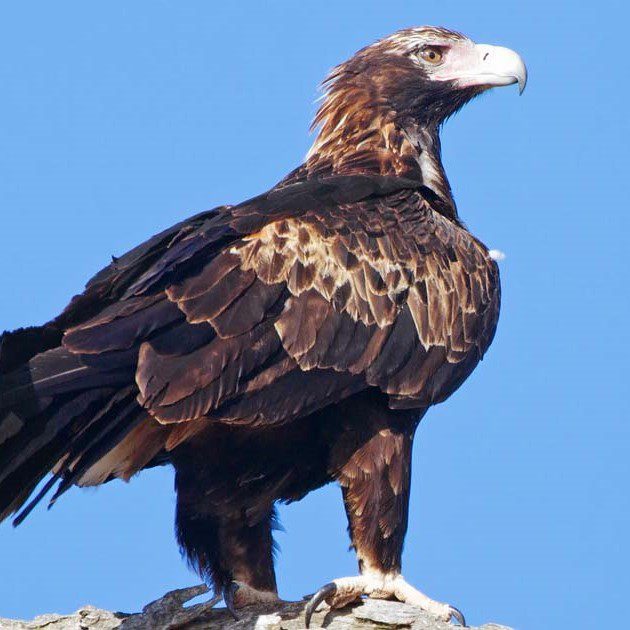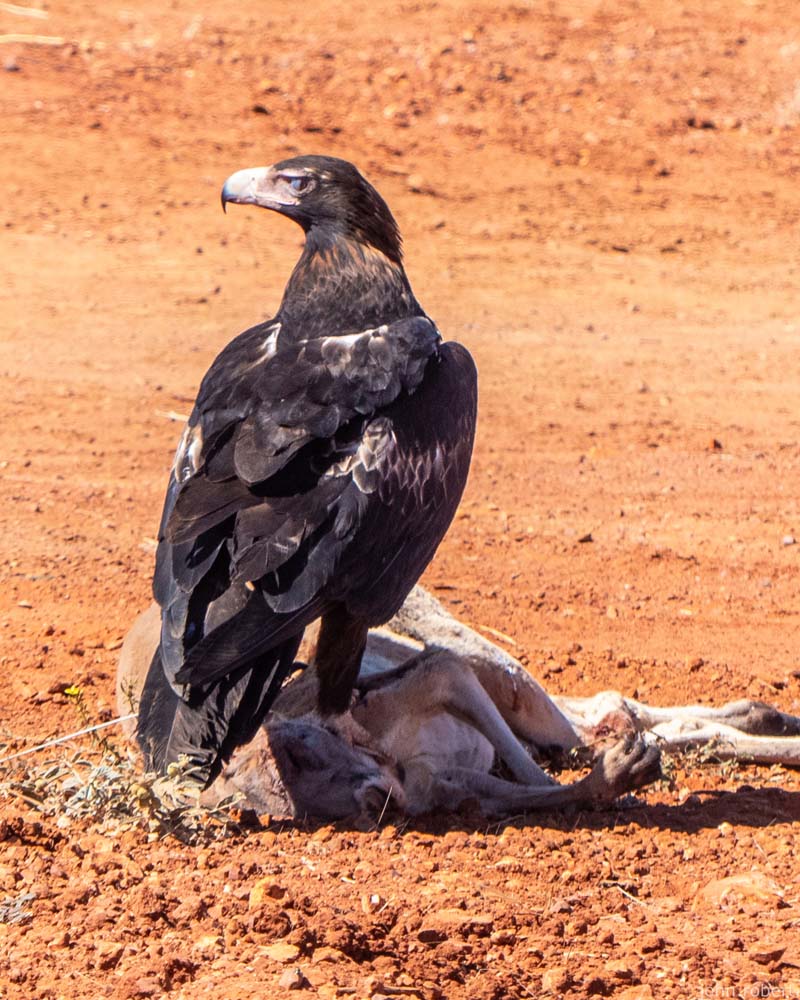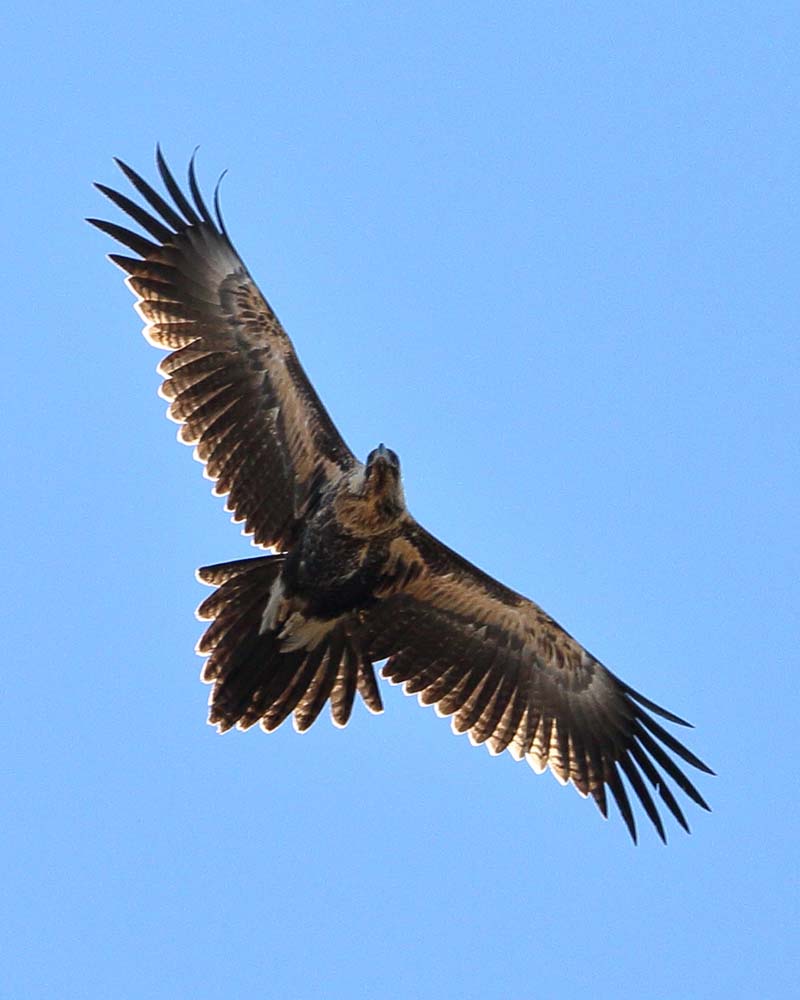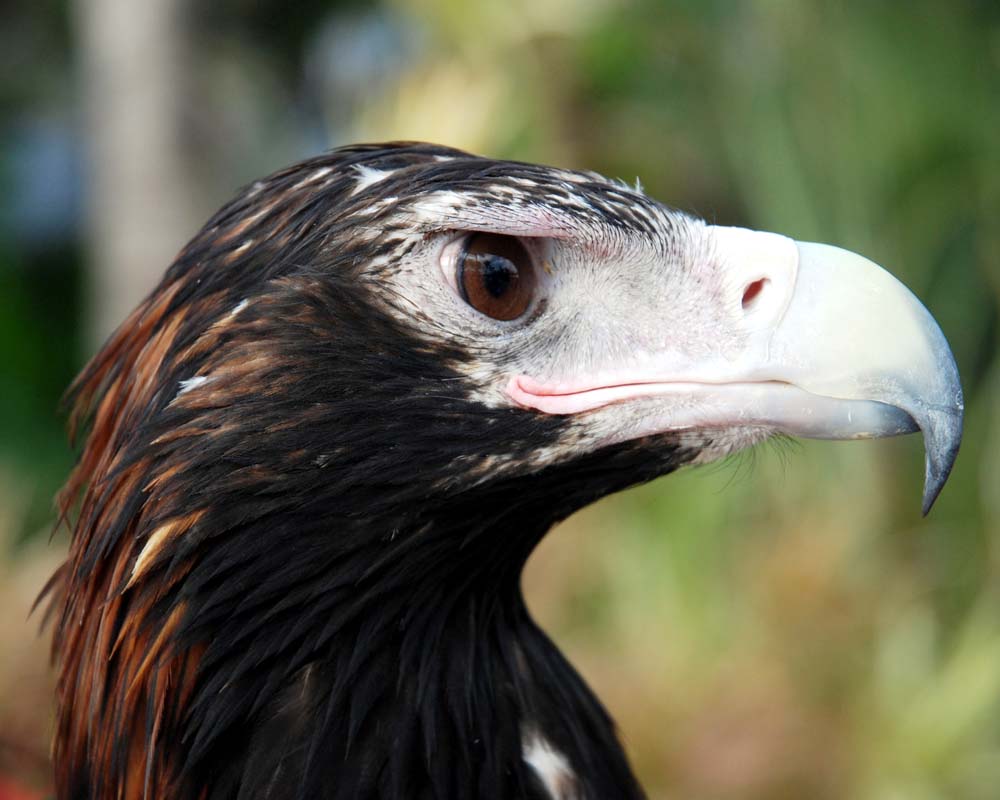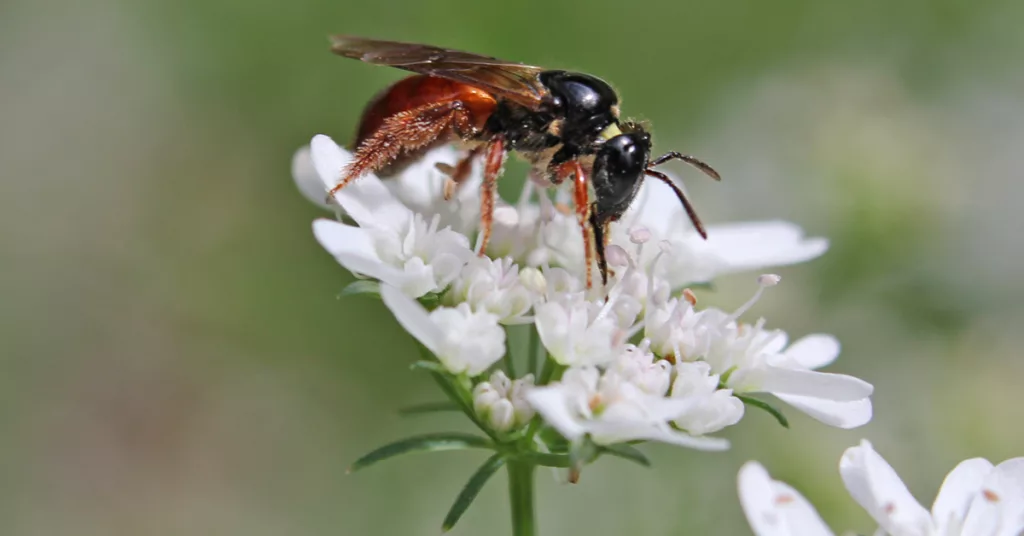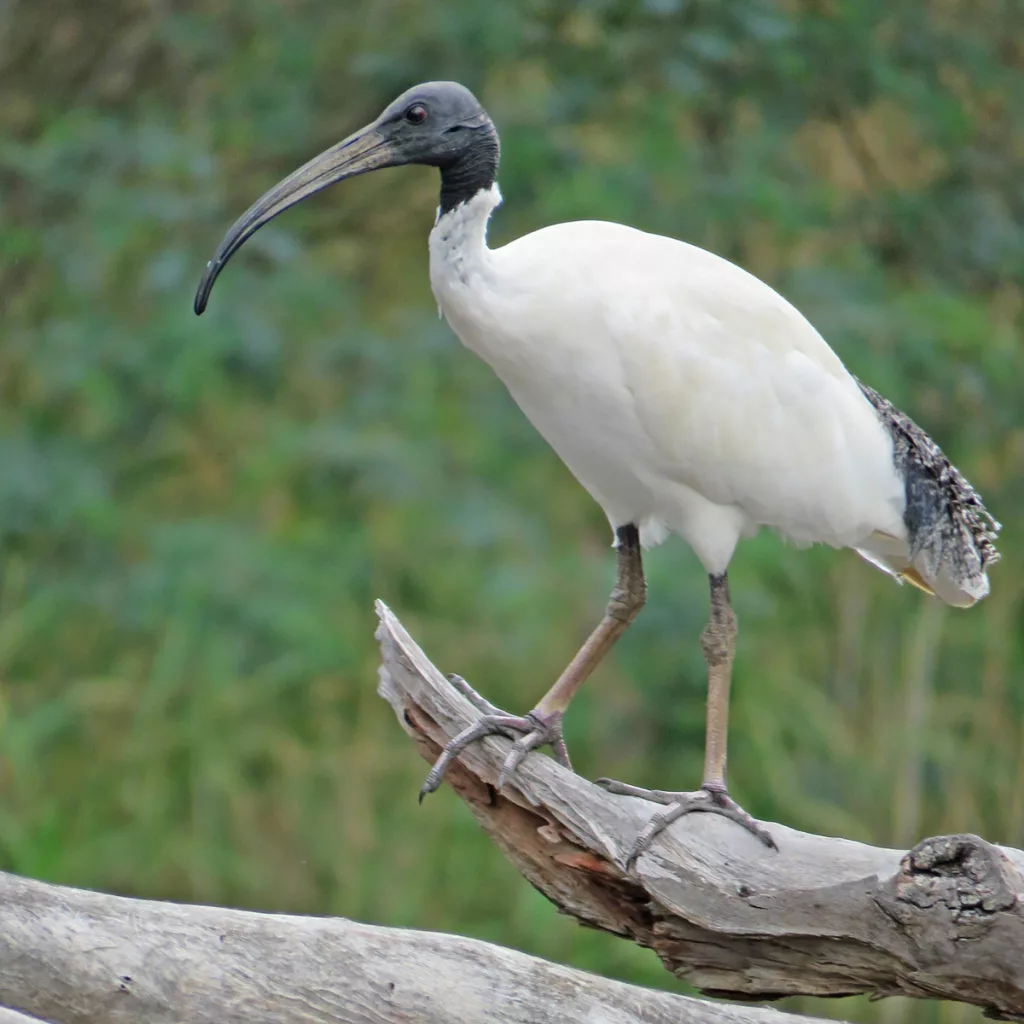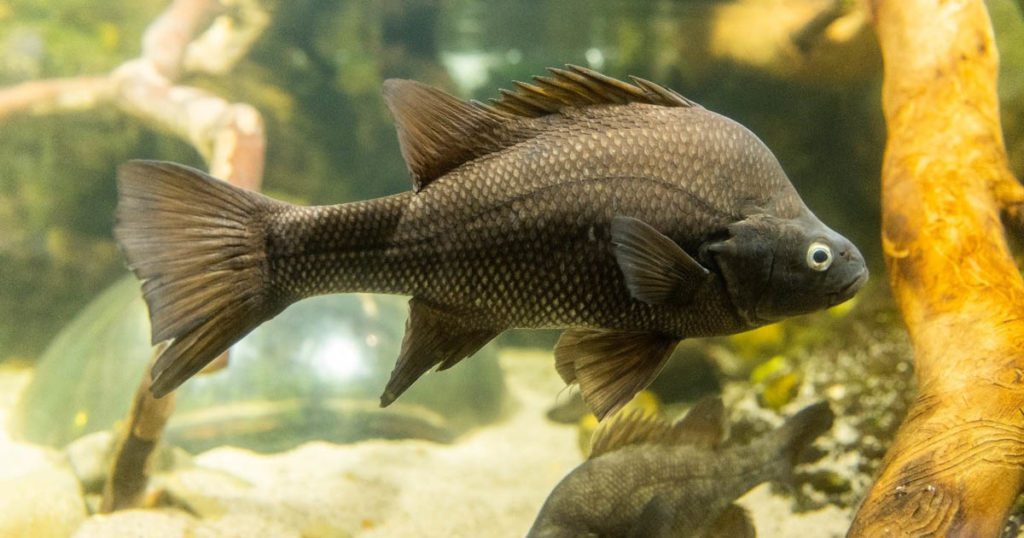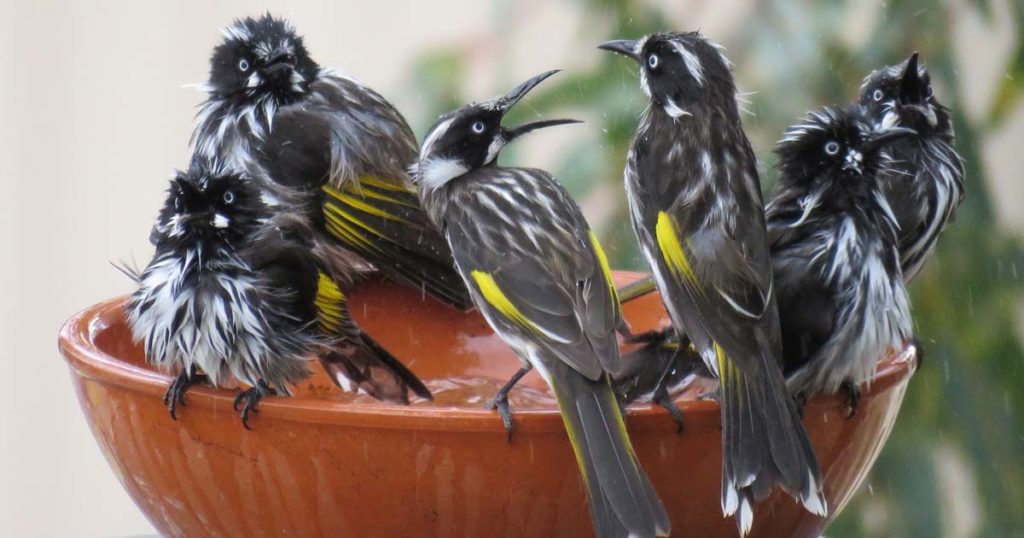Witnessing a giant bird effortlessly soaring, dipping and circling high in the sky is an awesome sight. While many birds of prey perform these feats, it’s the wedge-tailed eagle, with an average wingspan of two metres and a body length of one metre, that really stands out. It is a fearless defender of its airspace, attacking not only other birds but intruders such as model aeroplanes, drones, hang gliders and even light aircraft. This, coupled with the fact that it can soar to an altitude of two kilometres and stay in the air for up to 90 minutes at a time, makes this bird an undisputed “ruler of the skies”.
The wedge-tailed eagle is the largest bird of prey found in Australia with females being, on average, a third larger than males. This disparity in size between the sexes is typical for birds of prey. The adults have dark brown to black plumage, prominent shoulders, massive beaks, bare skin around their faces, wedge-shaped tails, pale-yellow feet and fully-feathered legs that look a bit like baggy trousers. Males and females have similar plumage.
Wedge-tailed eagles can be found throughout Australia and are comfortable in a wide range of habitats including grasslands, heathlands, woodlands and both temperate and tropical forests. Adult birds tend to remain in the same area for much of their lives, only moving large distances in response to climatic events such as drought or heavy snow. Juveniles, however, may typically travel 200 kilometres or more to establish their own territory.
While it’s easy to see these massive birds, it’s unlikely that you will hear them. Apart from during the breeding season, wedge-tailed eagles are largely silent. When they do call, it’s usually near the nest or during aerial displays and their high, thin whistles are not easily heard.
Wedge-tailed eagles mate for life. Breeding pairs collaborate to build a nest, although the female tends to do most of the work. The nest is a large platform or pile of sticks, which is then lined with green leaves. Over time, the birds add more sticks to the structure. With these repeated additions, their nests can grow to two metres across and up to four metres deep and can weigh a staggering 400 kilograms. They are so big, other birds such as finches and pardalotes sometimes make their own nests at the base of the structure, presumably because they believe the eagles will give them some protection from predators.
Nests are most commonly built high up in a tree with a good view of the surrounding landscape. Where tall trees are not available, the eagles will use cliff edges or rocky outcrops. Often the eagles will build more than one nest – up to two or three in the same territory – although they generally return to the same nest each year unless it is disturbed for some reason. Breeding wedge-tails are easily upset by human activity and so, if you see a nest, don’t go near it as you may cause the birds to abandon their chicks.
Wedge-tailed eagles usually lay two eggs, which the female, and occasionally the male, incubate for six to eight weeks. Typically, only one chick survives and remains in the nest for just under three months before it is able to fly. Once fledged, it can take a further four to six months for the young eagle to become fully independent. So, parenthood for wedge-tailed eagles is a rather drawn-out affair.
To feed their chicks and, of course, themselves, wedge-tailed eagles hunt a wide variety of prey with over 200 species being recorded on their menus. Small mammals, especially rabbits, are a firm favourite, typically making up 61% of their diet, while birds comprise 22% and lizards 13% of the food they eat. Insects and the occasional fish make up the rest. Almost all their prey is taken from the ground where it is grabbed by a pounce or a snatch after a long, gliding flight. From time to time, eagles may also take possums and birds from the tree canopy. Roadkill is another important source of sustenance, and it is not uncommon to see several eagles all dining at once on the carcass of an unfortunate kangaroo. Eagles can gorge up to one-and-a-half kilograms at a sitting, and this may keep them going for weeks before they need to hunt again.
The wedge-tailed eagle is now fully protected in all states and territories. Sadly, this wasn’t always the case. In fact, from the late 1880s until the mid-1900s, these magnificent birds were actively persecuted, particularly in Queensland and Western Australia, in the erroneous belief that they were having a dire impact on the sheep population. Between 1929 and 1934, laws were passed in Queensland, making it mandatory for landowners and farmers to kill wedge-tailed eagles. Later, bounties were offered in Queensland and Western Australia for the carcasses of these birds.
These disastrous practices resulted in tens of thousands of wedge-tailed eagles being killed each year. Subsequent research by the CSIRO has shown that the rationale for this persecution was entirely unfounded as sheep meat accounts for less than 9% of the eagles’ diet, and most of this comes from dead or dying animals, meaning the wedge-tailed eagle has little impact on the sheep industry as a whole.
Despite this relentless persecution, the wedge-tailed eagle has survived, and its population is now regarded as stable. The current threats to the bird are mostly from land clearing, eating rabbits poisoned with Pindone, collision with fences and overhead wires, and being hit by motor vehicles, especially when they are feeding on roadkill. However, some illegal shooting, trapping and poisoning of eagles still occurs, and if you suspect any illegal activity you are urged to contact the Conservation Regulator Contact Centre on 136 186 or Crime Stoppers on 1800 333 000.
This impressive and resilient bird deserves our protection so that it can go on ruling our skies for all time.
Learn more about how we all can chip in and protect our beautiful native wildlife here by visiting the Wildlife Victoria page: https://www.wildlife.vic.gov.au/
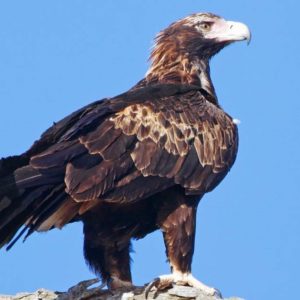
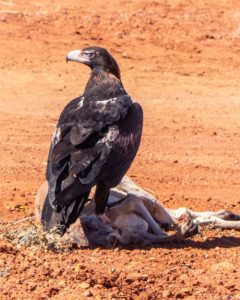
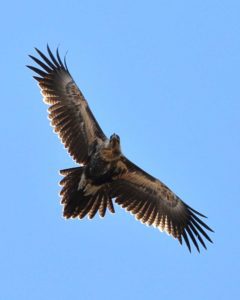
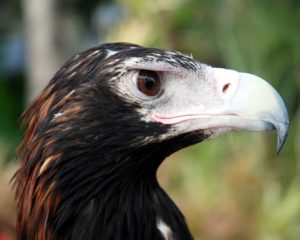
The wedge-tailed eagle is the largest bird of prey in Australia. Image gallery above, photos credit to: JJ Harrison (https://www.jjharrison.com.au/), CC BY-SA 3.0 https://creativecommons.org/licenses/by-sa/3.0, via Wikimedia Commons.
